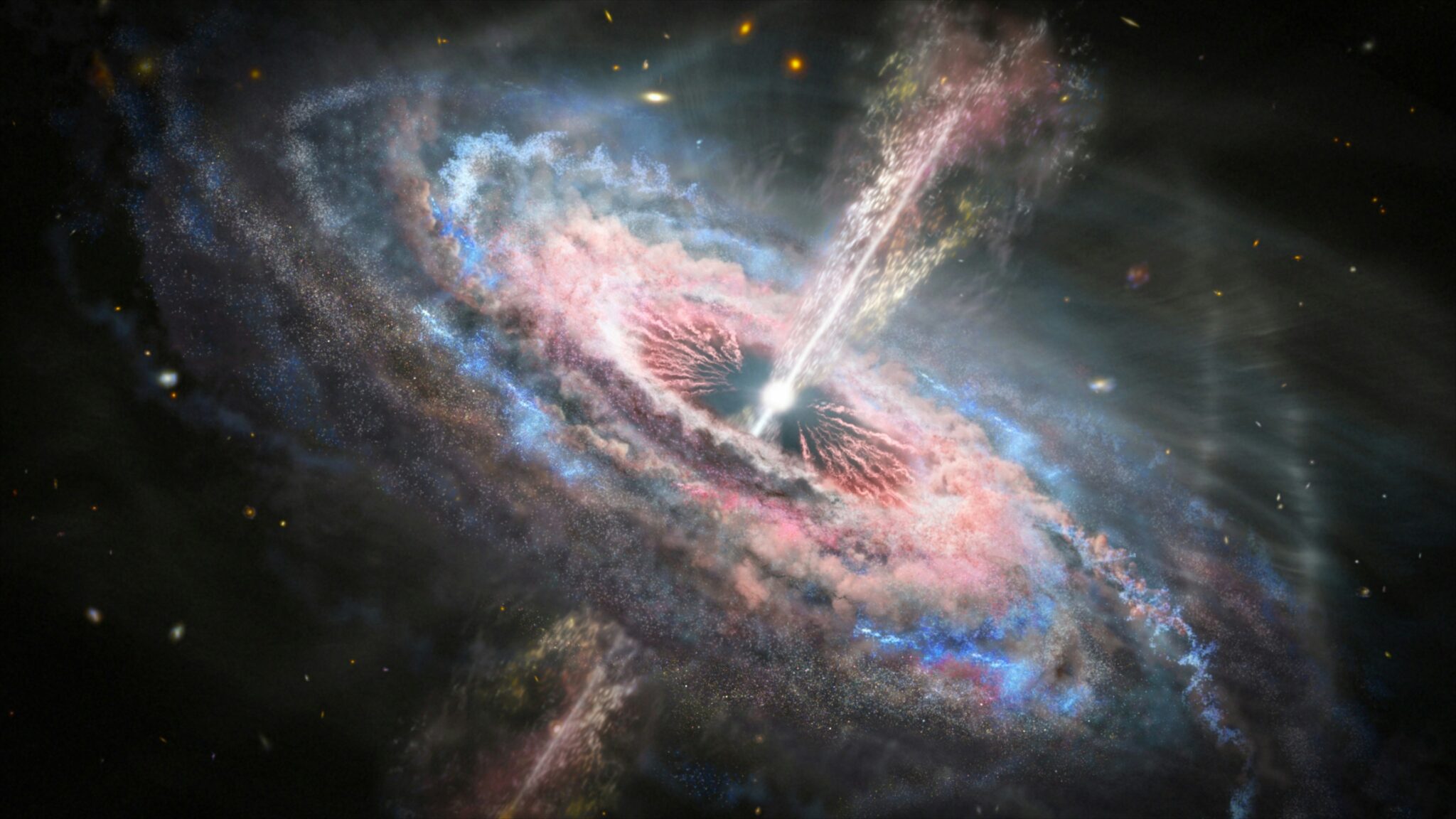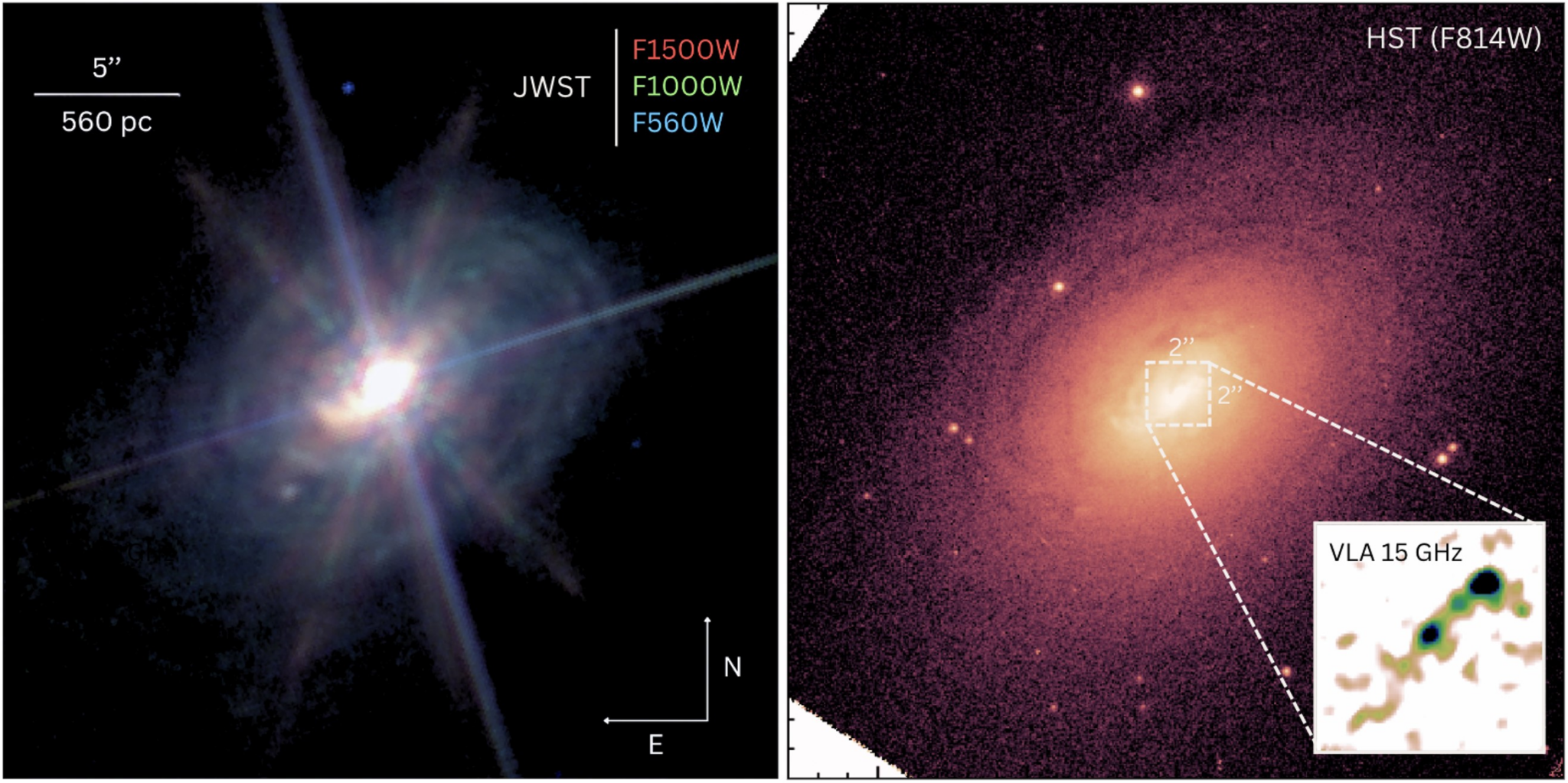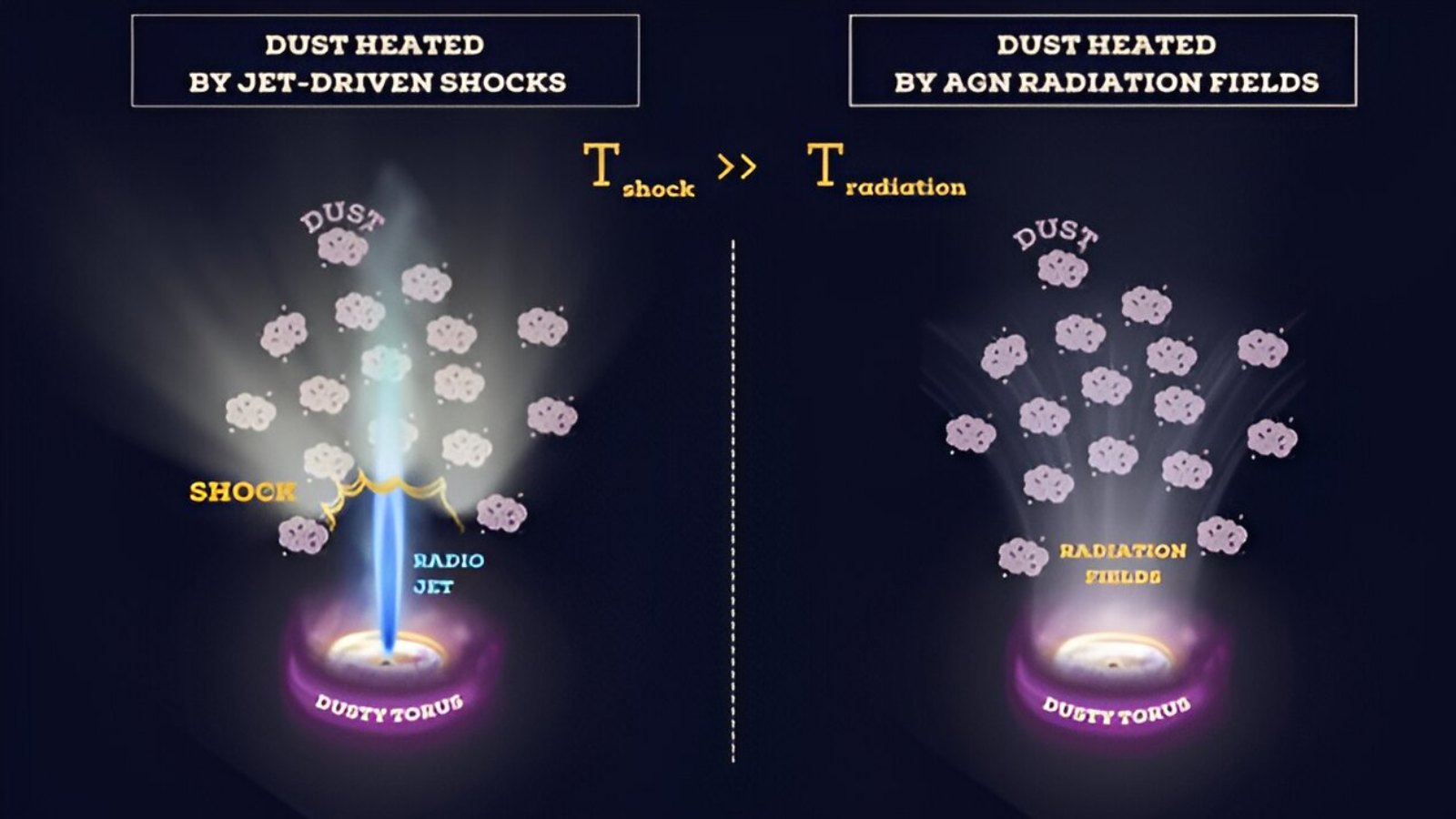Astronomers using the James Webb Space Telescope (JWST) have imaged the structure of dust and gas around a distant supermassive black hole in the galaxy ESO 428-G14, about 70 million light-years from Earth. They find that the energy that heats this cloud of gas and dust comes not from the black hole itself, as previously thought, but from collisions with jets of gas traveling at near-light speed, which generates a shock wave.

ESO 428-G14 is an active galaxy with an active galactic nucleus, emitting powerful light due to the presence of a supermassive black hole that absorbs matter. This unexpected discovery was made by the Galactic Activity, Torus, and Outflow Survey (GATOS) team, who use JWST to study neighboring galaxies.

Supermassive black holes like the one at the center of our galaxy, the Milky Way, or M87* in the Messier 87 galaxy, have masses millions to billions of times the mass of the Sun. They are surrounded by gas and dust, which forms an accretion disk that gradually feeds them. Due to enormous gravitational forces, these disks are heated to millions of degrees and glow brightly.
However, not all matter falls directly onto the black hole. Powerful magnetic fields direct some of the matter toward the poles of the black hole, forming jets ejected outward at close to the speed of light. These jets also emit light in various ranges of the electromagnetic spectrum, especially radio waves.

The dust around such black holes often absorbs visible light, but the infrared radiation that JWST can see allows us to look through it. The GATOS team, observing ESO 428-G14, found dust spreading out along the jet, indicating that these powerful leaks are not only heating but also forming this dust.
Further research may reveal how supermassive black holes influence the formation of their galaxies and interact with surrounding matter.
According to Space


